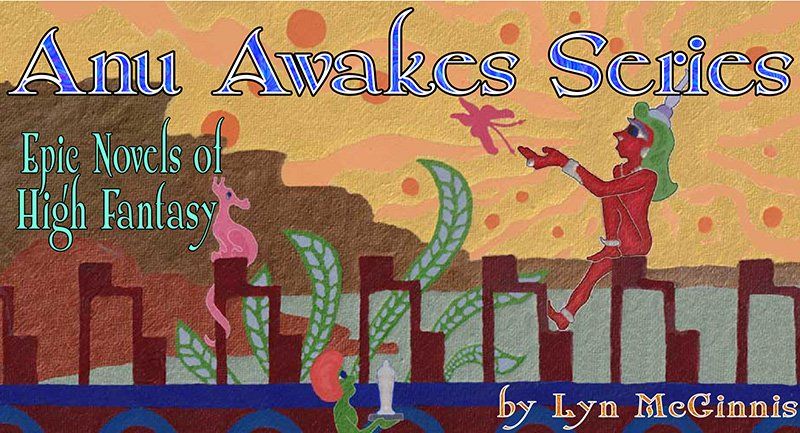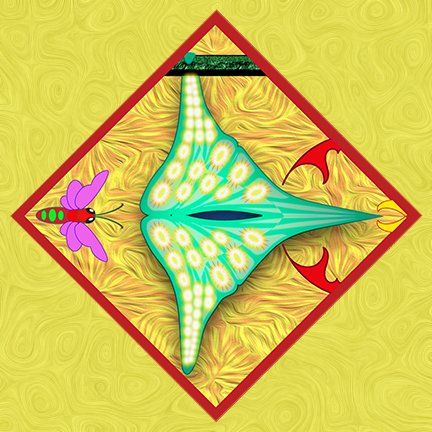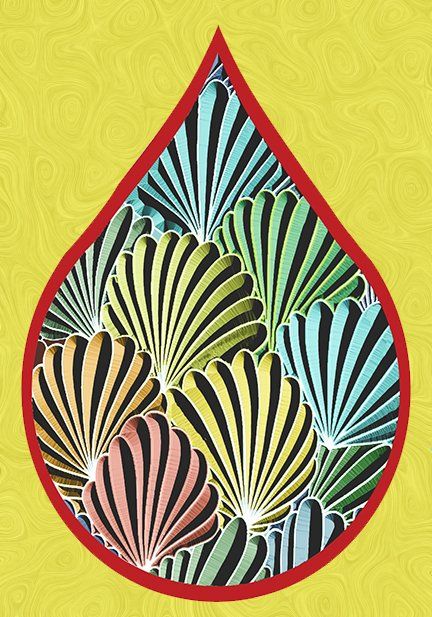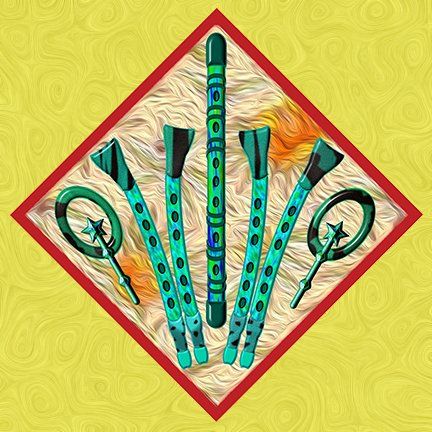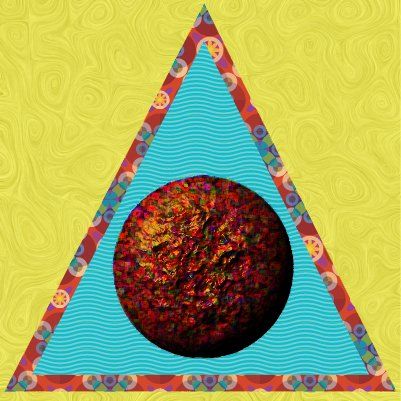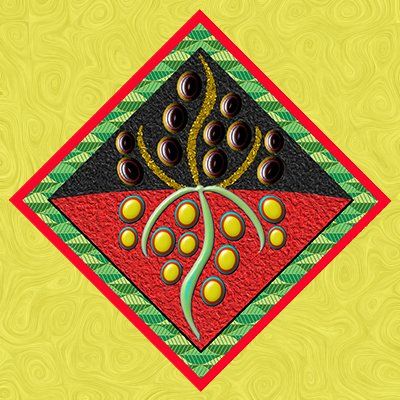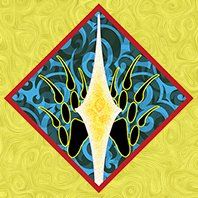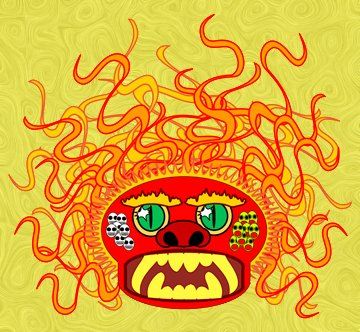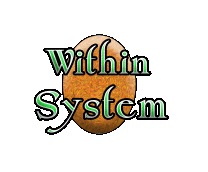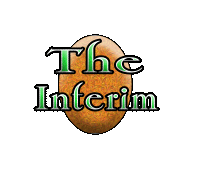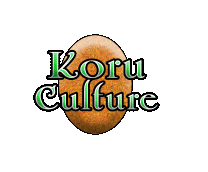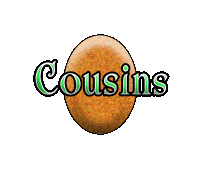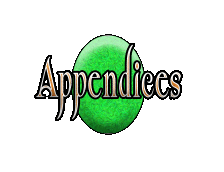
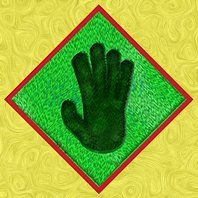
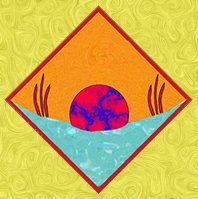
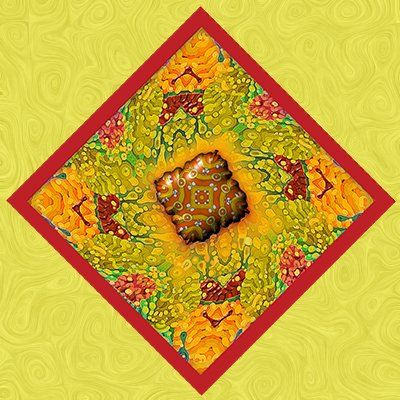
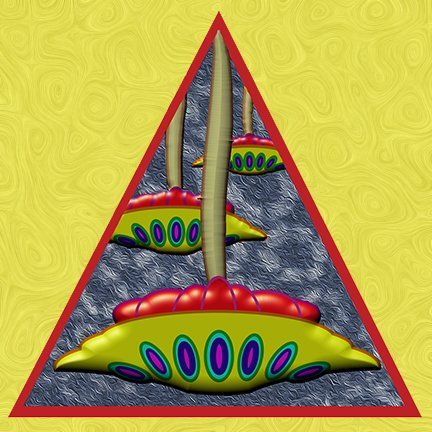
The Bowvow Tree
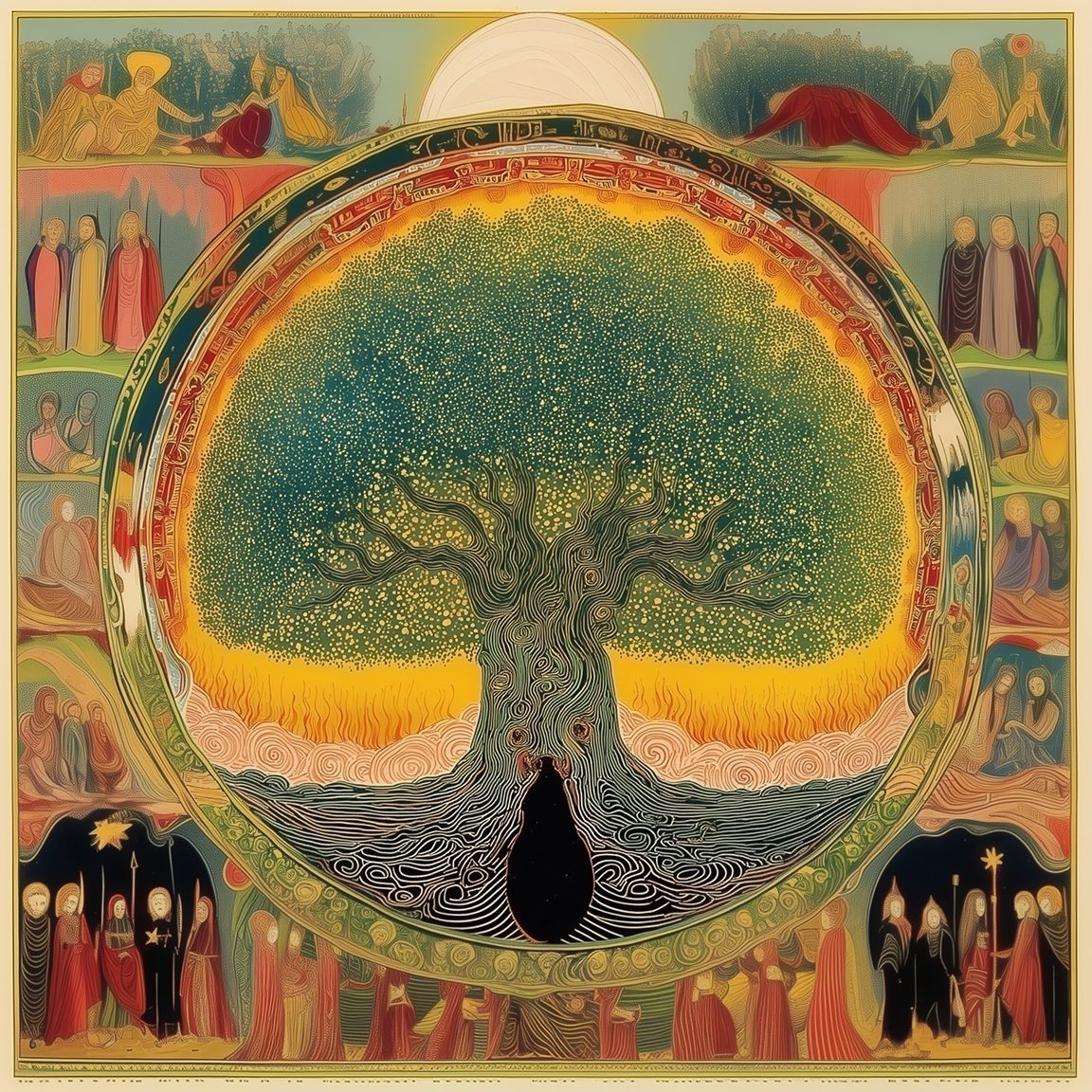
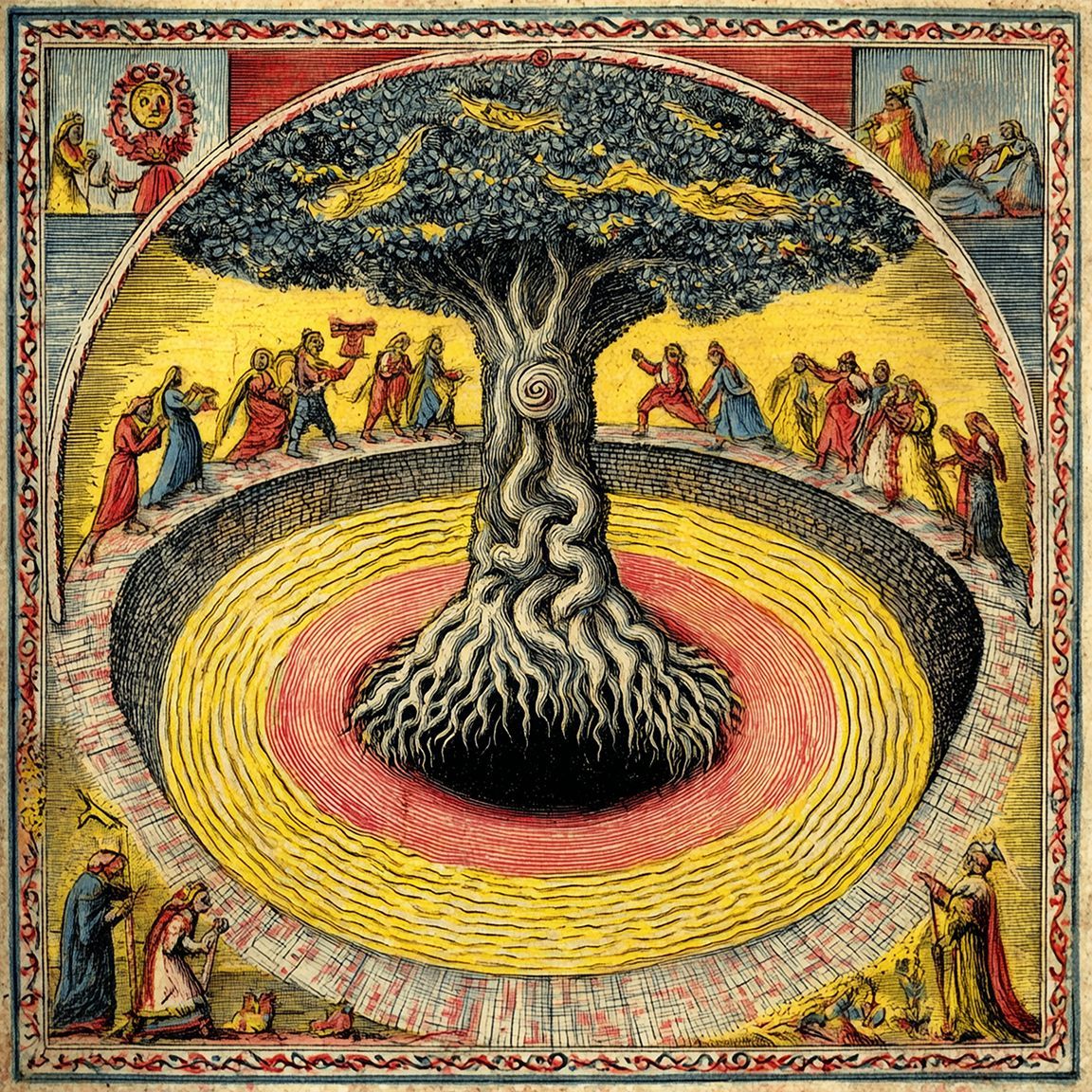
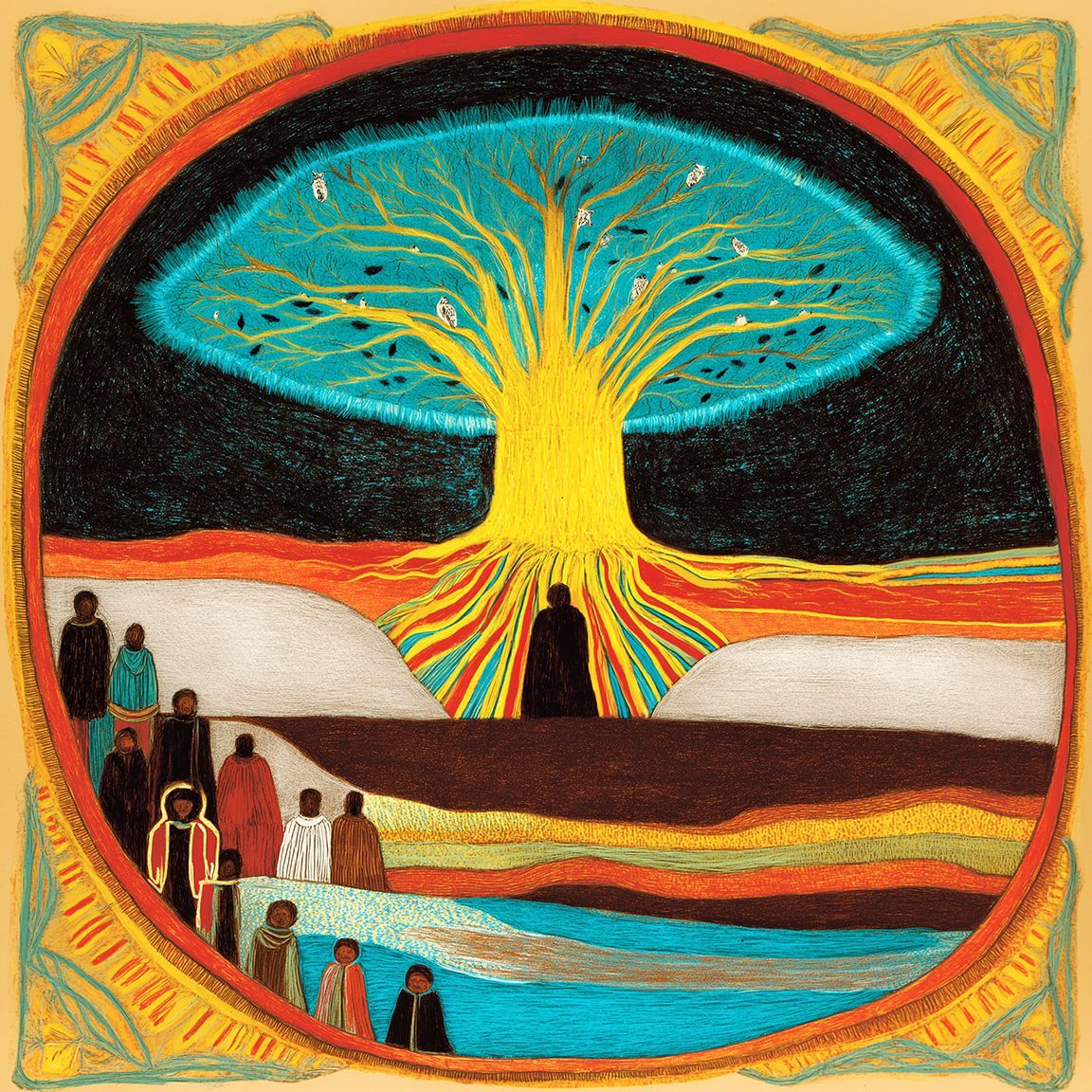
These natives of all but the polar regions resemble trees in many respects but differ in a few key respects. It stands rooted in the ground, shrouded in distinctive foliage, but closer examination reveals that its bark generates heat and a powerful, pleasant scent. The creature also produces a long series of rhythmic ‘drumming’ sounds deep inside the trunk. There are a variety of conditions bringing this about; an observer might be excused for saying it appears more likely to happen if it is ‘excited.’ These sounds also vary with the trunk's circumference. The larger the tree, the deeper and slower the beat. Another distinguishing feature is how these beings can right themselves after violent storms or Anu quakes. There are many instances in which even the ancients can rise after being knocked over.
Small creatures learn to use it as a refuge from predators. The smallest prodding by the tiniest bird will quickly produce an opening the creature can enter. Once it closes, the strongest animal cannot breach the seal from the outside. Inside, the creature is safe, but they generally remain only briefly.
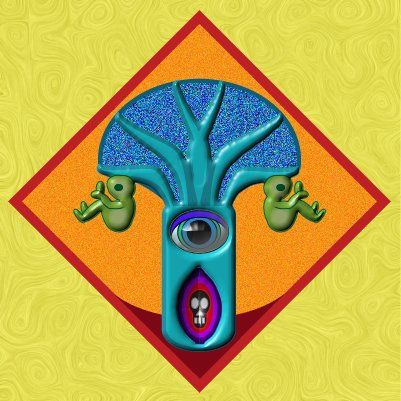
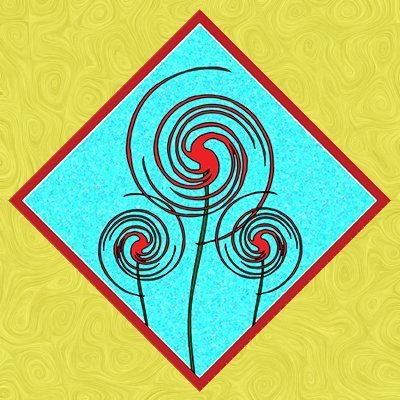
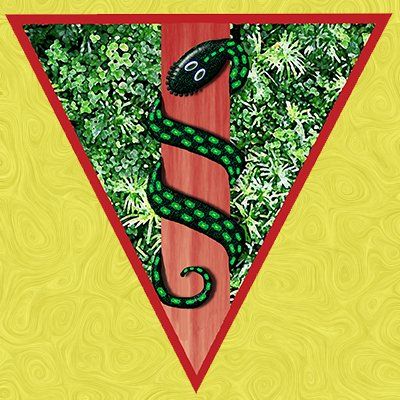
Note, while most insects are harvested in a controlled fashion for food, in some instances composing a large portion of cluster diets, the following have distinguished themselves in various ways and are not eaten except in extreme need. For insects significantly modified by the Living System, see Koru Insects and Insect Societies.
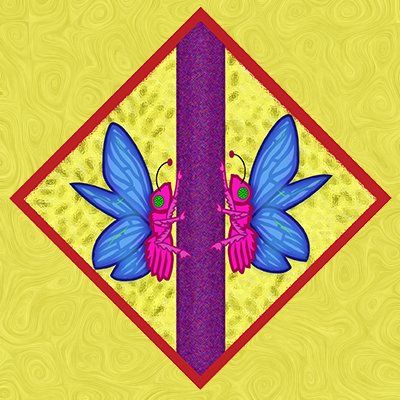
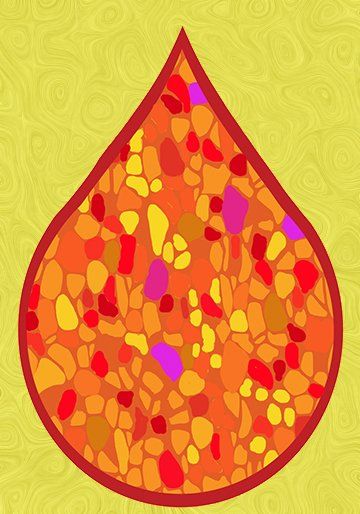
Remarkably, these modest beings have played a fundamental role in establishing the Cluster-of-Clusters Nations and defeating the Suvuka.
Midge’s Role in Tatchlan Modifications
The
Primary and
Uluvatu Masters took advantage of the simple and easily modified presence of Blood Midges within
Tatchlan. At the same time, they enacted profound changes within what was then
The General Plain of the Living System. These abundant swarms were outfitted to carry successive generations of refinements to all
Tolku
Sensitives across the
Skin of Anu.
Honoured Historians now speculate that one reason Tatchlan became so established on
Statos-Vey and the southern coast of
Rho-Jashun was the climate favouring the Midges’ disseminations. It is now known that several critical refinements to
Sensitives, eventually leading to the formation of the
Spokes
of the Cluster Wheel, were mainly due to their being visited over many generations by Blood Midges carrying living parcels that enriched and augmented them.
As with all such surface work, this was mirrored and magnified within the Resplendent work of Tatchlan.
Midge’s role in defeating Suvuka
When Master Duamang domesticated the Brangnam Plague to sterilize the Suvuka occupying Rho-Jashun, she needed an agent to carry the pathogen to them. She chose to revisit the wisdom of the ancient Uluvatu Masters by taking hold of these ubiquitous pests that had performed such good service for Tatchlan in the past. Blood Midges were known to prey on the hulking beasts at their ears and other small portions of exposed flesh. This required several branches of Midges to be located and modified within Tatchlan to accept and harmlessly carry the plague. They lighted on all their usual blood sources, but the Brangnam would only get off onto Suvuka flesh. In doing so, the Midges were said to be their ‘chariots.’ The Suvuka were undone on the entire Rho-Jashun continent by these diminutive agencies.
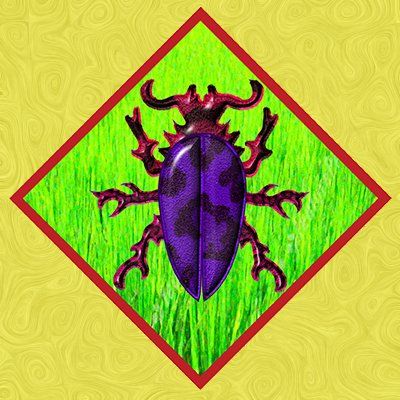
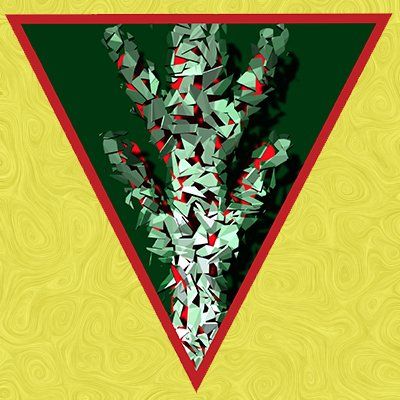
Note, for Insect Societies significantly modified within Tatchlan, see the Living Instruments section.
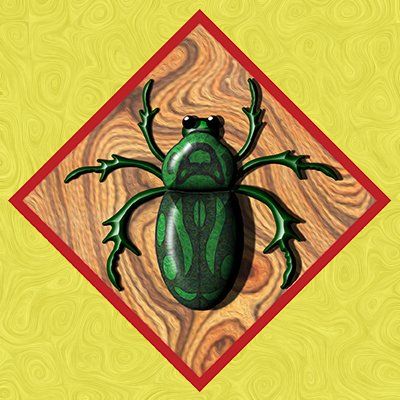
Another distinction they have on the Skin of Anu is they are seen as having ‘many bodies and one mind,’ moving in either unison or perfectly choreographed arrangements.
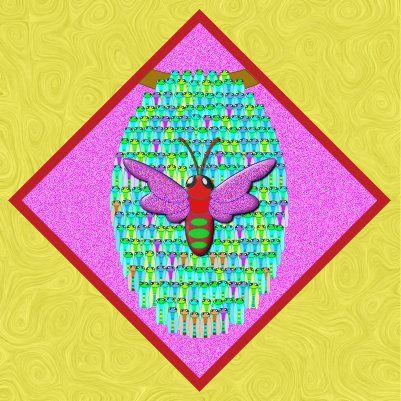
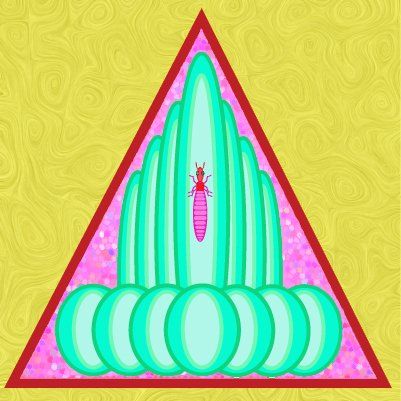
In
pre-Tatchlan times, these colonies were subject to what is known as ‘Mound Worship,’ where the colony was seen as a symbol of life and fertility. Circumambulation ceremonies took place around larger colonies, and food offerings were made to them regularly. Even in the very early stages of
Nu’s Blossom Cycle, when it was initially benevolent, these Mounds were known to emit high-pitched notes, leading to the notion of ‘Mound Song’ as an early sign of an impending Blossom.
This Koru image shows a symbolic Ketukku Mountain with the Queen at its heart. Her mountain is presented as if it were composed of Life Pillars, the unmistakable appearance of life and vitality. The Koru identified with the Ketukku and used their forms as symbols for the perfection of their nocturnal, underground society. The Ketukku’s aroma, savoured by the Koru, is described as a unique warm blend of turned loam, wood essence and distinctive life juices. The Koru holds a special place for the Ketukku, whom they name ‘The Rooted Ones,’ “for their steadfastness, industry and unwavering dedication to each other.” These colonies are the Koru’s Perfection Symbol.
Ketukku peaceable relations
Another distinguishing feature is the
Ketukku colony’s response to discovering another colony within its territory. When a new Queen flies away to establish her kingdom, there is evidence she selects her domain with great care. In part, she seeks out a territory where no other Ketukku are present. An elaborate process begins if her subjects later discover those from another colony after founding her new realm. It appears Ketukku Scouts from each colony meet briefly at the halfway point, and observers agree a swift exchange of aromas tells each other much. Generational studies agree that the age and extent of colonies are deciding factors. In all such cases, the smaller and newer colony immediately vacates their premises.
In popular Tolku culture, this inspired the value of ‘Elder First, younger last,’ which remains embedded in modern
Cluster-of-Clusters Nations. Spies and scouts from the younger colony begin to fan out in all directions, away from the Elder Colony. This process may take one or more
two-weeks to determine. Once a site is selected, the Soldiers line an exact route, and the various classes march in file with the Soldiers standing facing outward, waving their great mandibles to ward off any attack. Near the end, the Farmers emerge, carrying far more of their fungi and other crops in their mouths than seems possible. Finally, the Queen exits, and all Soldiers form a wide perimeter around her as they march to her new kingdom. Among many reasons for the
Koru’s adoration of the Ketukku is this extended effort to avoid conflict with their own kind. The Ketukku are quite able to defend themselves from all other threats.
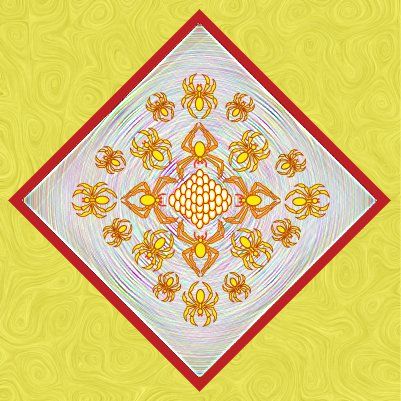
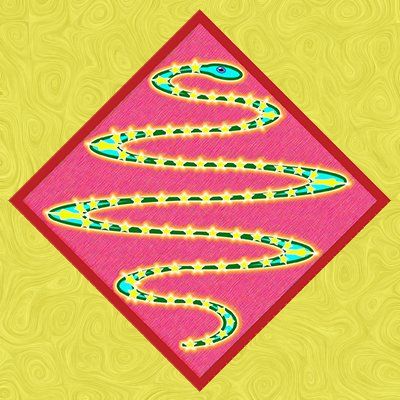
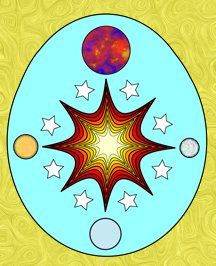
Xumkuka and the Danam Yelda
Unique nests are built atop Danam Yeldic clusters, which make distinct sounds to attract them. When one chooses to settle at these, they wrap their large bodies around the configuration, as they would in the trees they usually inhabit and secrete a coating that hardens into a protective shell for the creature. This protection is for the elements, as they have no natural predators. Despite their extent, they weigh less than a creature half their size. After death, they are seen to have hollow bones and generate a gas that lightens them.
In the
Secondary Epoch, they have become associated with Yeldic
Majastas. This is due to the creature’s novel attraction to them. Some maintain their territory around the Majastas’s current location and move when the Majastas do, leading to a new name, ‘Royal Xumkuka.’
Xumkuka and Yakku
The
Yakku have a special affection for this creature, similar to the one they bear for the
Gandahatapan, based on their unique regard for the clarity of the air. They are observed to gently glide through small flying insect swarms or particulate matter, leaving the pristine air in their wake. As such, they are seen as ‘air purifiers.’ In this setting, they have become symbols of vitality and are prominent symbols of their healing institutions.
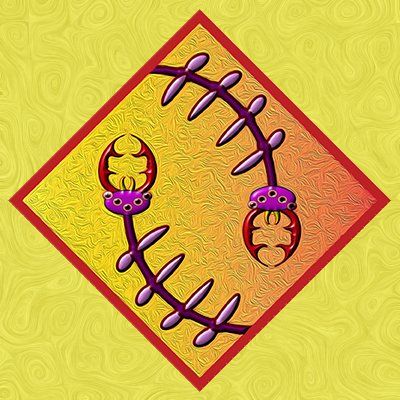
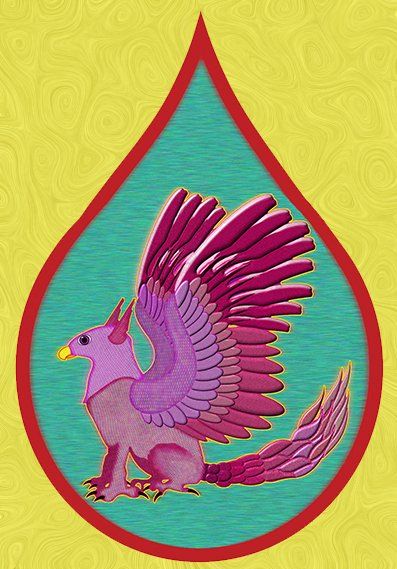
Gelion Thrush
This little bird lives in the temperate zones. Chiefly noted because of its call at Nu’s setting, its song announces, “Nu is gone! Nu is gone!” It is one of the first singers to stir at dusk, so its theme is first attended to. The Gelion Thrush continues the same refrain through the night, but most other birds have more vital voices, so they are seldom heard again.
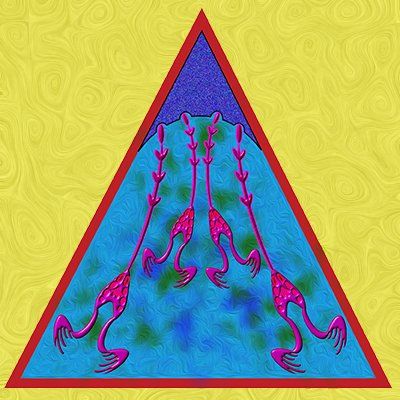
Sirintya
This is a unique airborne animal which, despite its diminutive stature, displays many noteworthy features. These include possessing one of the most potent toxins (only the Toohund’s is more deadly). When in flight, its body becomes almost invisible at night and on overcast days. When the Eye of Nu is out, the creature’s shimmering blue/green skin and multiple light-emitting cups (called ‘chalices’) on the underside are visible. Like its distant relations, the Thethelem and Skayo, this is also a broad and near-flat creature of little weight that can swiftly propel itself through the air. The adult has the wingspan of a Koru’s open hand. This small creature is a formidable nighttime predator with its digestive juices in its ‘chalices’ on its underside. They catch prey by attaching themselves by one wing to a branch, causing their chalices to produce a powerful glow. When insects or other small game draw near the bottom half, the creature swings upward to grip the branch, trapping their meal.
A stinger darts out of each chalice immediately, piercing the prey’s body, then corroding juices filling the wounds. The body is liquified quickly and pushed towards its large mouth at the centre. The Sirintya’s eyes are on the other side, so this operation is conducted entirely by vibrations around its chalices. Once having fed, the creature turns quite dark and forms a hard bulb on top of the branch, where they remain dormant until they are transparent again.
Due to the slight residue of their juices remaining in the air, many creatures are wary of their traps. On overcast and windless days, they are at their most deadly when they are near invisible and still. Being so small, they seldom trouble Yakku or Yelda. They have been known to take a venomous swipe at either should they accidentally venture too close to their perches. These encounters on infrequent occasions have proven life-threatening to the very young or the aged. Upon death, they turn a dark green and are easily found. Even then, their skin may exude venom and are best left untouched until they dry out.
Sirintya and Gandahatapan
Many eyewitness accounts, fortified by numerous studies, have added peculiar aspects to this little creature’s life. Despite being primarily nocturnal, Sirintya possesses a deep animosity for the diurnal Gandahatapan. The insect colony seems to grow animated if one or more Sirintya are discovered within their territory. In both cases, these encounters may be lethal. A single insect stands no chance if it flies too close to the creature. If two to four members of a Gandahatapan colony discover a Sirintya hanging from a branch and attack, it may go either way. If they are not careful, the Sirintya will trap and consume them. If not, it may wrap itself around the branch and present a tough hide to repel most of its stingers. This defence is only temporary, and should more arrive from the colony, the Sirintya may try to escape and outfly them. Should a large company from the Gandahatapan colony choose to attack, the Sirintya may not survive.
On rare occasions, Rural Clusters, trying to protect one or more Mahakram trees from a visiting Gandahatapan colony, have tried to set hanging traps of lines of Sirintya between the two insect societies. Gandahatapan have been known to take it upon themselves to destroy Mahakram nests, and all know of the hatred the Sirintya and Gandahatapan bear each other. At best, this is a temporary measure, which may only be sufficient if the Gandahatapan is focused on something different than the Mahakram. If they are, nothing can stop them from attacking the tree.
Sirintya and Kumastam
Far more bizarre are tales of large numbers of Sirintya attacking a
Kumastam. As this was an infrequent event not witnessed by anyone alive, the
Treasury collection accounts discovered during The Interim were dismissed as fables or allegories. The unbelievable truth of these ancient declarations was revealed only with fresh incidents witnessed by many early in the
Secondary Epoch.
Much of what takes place and why remains a mystery. Sirintya is usually solitary, except during their mating season. Yet, these outlandish events appear to have nothing to do with this and seem to arise without provocation. There is no discernible time pattern, with witnessed and recorded attacks separated by decades or several centuries and in varied locations and climatic conditions.
What little is agreed on is these shocking incidents usually take place in the tropics and involve what appears to be a multitude of separate Sirintya suddenly rising in a cloud to envelop the head of a Kumastam flying overhead. The creature either successfully shakes them off or is stung repeatedly. It still may free itself, but the longer the tiny attackers remain on its head, and in particular its eyes, the more poison is injected. Ultimately, the monster is brought down by a multitude of what are to it infinitesimals. Seldom is the Kumastam killed, and most, after a short period of being stunned, rouse themselves and take to the air. This singular spectacle draws the attention of any self-aware being present and various other creatures. The strangest portion of this tableau now begins. All the small birds and other animals hiding from the Kumastam begin to emerge and do a series of triumphal swoops over their fallen enemy. During this display, the Sirintya responsible for bringing it down positions themselves in the surrounding trees and catch many of these prey animals unawares. It is now agreed this is the initial attack's intent, making it one of the most extraordinary and elaborate examples of co-ordination and entrapment.
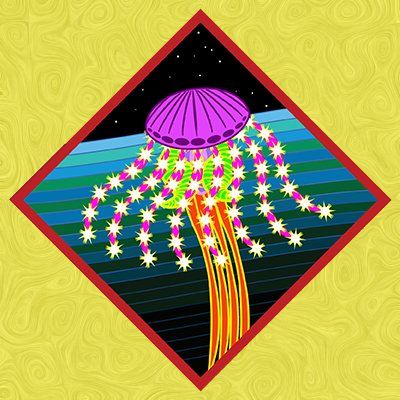
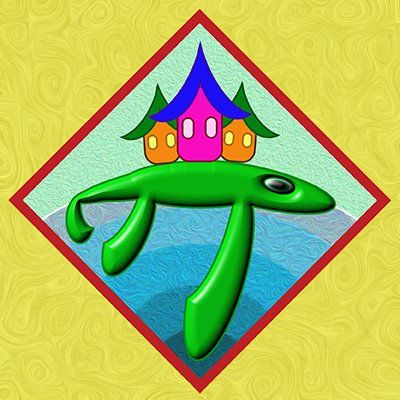
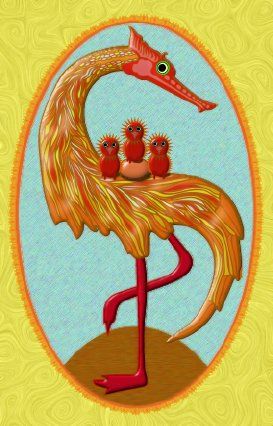
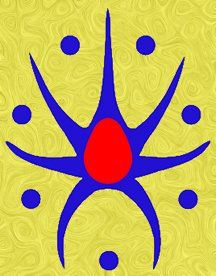
Blue Star
This small sea creature familiar to the southern shores of the Panchala Sea is known for its elegant appearance and potent venom. It has seven radiating arms and a large egg-shaped red spot on its back. While this spot is the reservoir for a small amount of toxins to secrete if it feels threatened, it appears primarily to ward off molestation. The females are famous for guiding their young in seven small clumps between each of their arms.
This creature has gained respect and affection among coastal populations from prehistoric times. Sailors would introduce them onto their ship hulls to assist in clearing them of many clinging pests. While of little practical use beyond shipping, the Uluvatu Masters appear to have appreciated their simplicity and elegance and have found them easily on The General Plain; they had this very early icon fashioned. Thus, this little creature would achieve symbolic status during both the Pre-Tatchlan period and later during the Primary and Secondary Epochs, when they become associated with royalty.
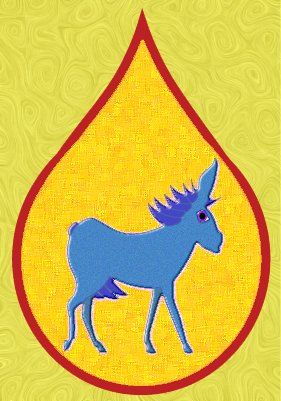
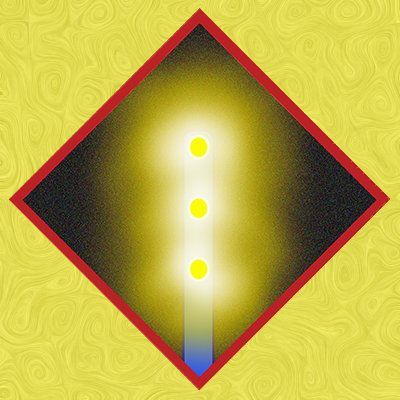
Danta on Thermistal
In pre-Tatchlan times, the continent of Thermistal was shrouded in myth and superstition, with few explorers ever returning from its shores. While the early Masters achieved much, their formulation of tools and applications within Tatchlan was incomplete. An unforeseen result of their work within the Living System on the Danta was the accidental domestication of another branch of creature living on Thermistal. The Suvuka's defeat and sequestering behind the Vettencore Passage revealed a mystery. The Tolku were now confronted by many southern animals, including the Danta, on this northern continent. This led to intensive research and theorizing that came to be known as ‘Migration Theory.’ This discovery of another separate population of Danta and certain other animals and plants on Thermistal resolved an enigma encountered by these early Tatchlan Masters. Reports of a puzzling ‘echo’ or ‘shadow’ around these beings within the Living System grew during their work. This remained a conundrum until discovering this secondary population, which had diverged subtly from the southern breed, was confirmed, and northern samples were examined.
Unbeknownst to the developing Tolku nations of Rho-Jashun and Statos-Vey, a rival civilization of a very different sort thrived on Thermistal, that of the quadruped Suvuka. They had begun as small, isolated herds foraging over vast ranges. There is some evidence of native herd beasts which the Suvuka initially hunted. Early in their history, these appear to have disappeared with the arrival of Danta in their vast herds. Sporadic evidence suggests the Suvuka initially tried to fight this incursion but then displayed their ‘Collective Crown’ by adapting and turning from hunter/gatherers into herders. They lived something of a pastoral existence and, among other things, herded Danta as part of their continental management of all livestock under their control.
A quaint tradition developed for when these large, docile creatures approached a settlement. It was found a rhythmic clapping of hands and chanting known as the ‘Thyma Rhyme’ unsettled them, and they would move away.
Danta Horn Musical Instruments
The horn extending out of the back of this beast’s head is hollow and used for various herd calls. In prehistoric times, it was discovered that this dense raw construction could be improved in multiple ways by cutting, carving, drilling, and turning to create various wind instruments. The unique composition and density of the material lead to a tone of startling richness. While their skin, flesh, and bones had many uses, their horns became specialized craft and trade items from very early times. The carved surfaces of some of the most-ancient monumental Witness Monuments display the domestication of Danta to produce their horns. Different ages of the beast had other qualities to the harvested horns. Younger Danta horns could be fashioned into some of the most exquisite flutes. Elder horns may be sliced into thin rings and hollowed out to create musical chimes when struck. These instruments came to be associated with deep culture due to their rich music and ultimately became a symbol of refinement and an art-enriched life. Due to this association, this Primary Epoch icon has become associated with the Koru Dallamaplan and the Danam Yelda’s Variothya Erudite Bureau of the Enumerator Ministry.
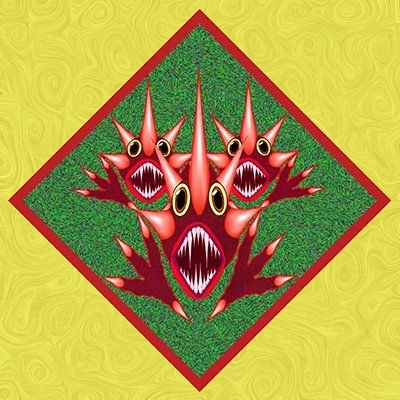
Tatchlan tames the beasts
Early in the Greater Era of the Primary Epoch, a specialized Estate of Invocates finally found a way to tame the Thyma. They located them within The Living System and began a long modification process. First and foremost, they build in a profound inhibition against viewing a Tolku as a food item. Once this was firmly established, they sufficiently altered their mental processes to allow them to see Tolku as an extension of their pack and thus take direction from them. This opened up a whole new role for them as servants patrolling the edges of domesticated herd animals and finally being true guardians of rural territories.
Thyma are known for their co-ordination and, above all, their sudden attack. For this reason, this Primary Epoch Icon shows them in a fashion emphasizing their ferocity and speed over detailing their proportions and features. What is missing is the length of their snout, their lean bodies, sturdy back legs and long tails.
Not surprisingly, Thyma are prominent in many most-ancient epics and other traditional literature. Their five fearsome horns surrounding their face and wicked talons guaranteed them a place amongst frightening and cautionary tales of old. Even the Tatchlan Masters associated this icon with Hesha Vira, the Face of Raw Life. These frightful images are also associated with both the Tatchlan realm of Indatubangus and as a stand-in for the concept of The Common Desire.
Evidence shows that when the early Tatchlan Masters found the Thyma, they almost also found the Suvuka but failed to distinguish them. They were undoubtedly very different beings, but their proximity confused them. It was later learned that the Suvuka had already developed their own rudimentary control and management over the Thyma packs of Thermistal. During The Interim, the first Koru re-established their connection with the Thyma. Still, it was left to the Danam Yelda to fully utilize them again as the Foremost Ones had during the Primary Epoch.
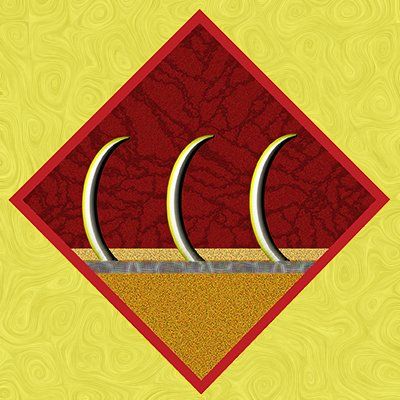
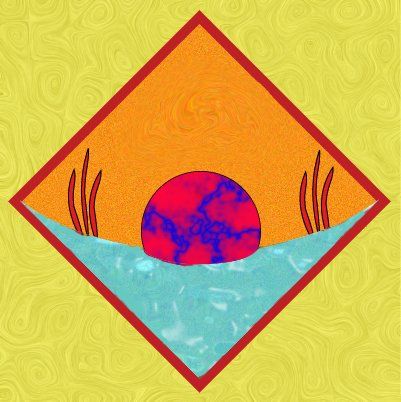
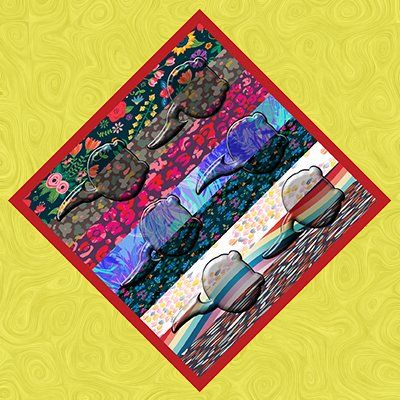
Within the Flesh of Anu
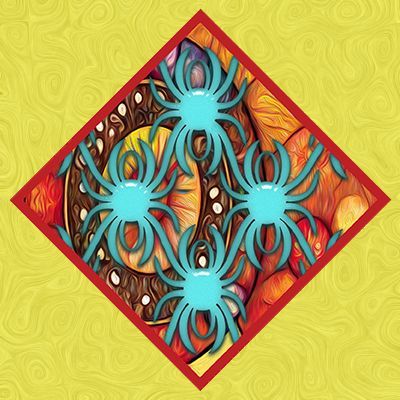
Jesplace
This is a class of beings dwelling at immense depths beneath the Skin of Anu. While possessing many divergent characteristics, they share one feature in common: none are endowed with even vestigial eyes. They appear to have emerged in complete blackness in the deep recesses of prehistoric times. The term ‘Jesplace,’ from a forgotten tongue, is understood to mean those ‘born without eyes.’
As with many other tomes of obscure material, collections within the Treasuries devoted to Jesplace were initially dismissed due to the lack of current knowledge of this entire class of living beings. Despite the Venerable Koru’s extensive excavations within the Mulungu Mountains and elsewhere on Rho-Jashun, it was the Danam Yelda who, by accident, rediscovered one representative of this group in a deep cavern within the Veradapandra Mountains in 140,356 UKC.
Later identified from Treasury sources, a portion of what appeared to be a significant ‘Faval’ herd was displayed in Bhampay for study and wonder. Being utterly indifferent to any form of light, most were either pure white or black. Yet, some of these creatures displayed remarkable hues due to their distinctive diet under certain light conditions.
An accurate account of this vast, complex and interdependent population was realized when the Koru excavated their Deep Domains. Eventually, it was determined that the population was far more extensive and diverse than what dwelt on the Skin of Anu. To the amazement of all, these percentages exceeded the majority of beings active at night instead of the day on the surface. The discovery of many new unctions and salves and a host of novel functional elements that could augment Healing Vats opened new chapters for the Pacifier, and Doubles and Vats Bureaus, and other ministries in the Koru and Danam Yeldic Wellbeing Ministries.
Within Tatchlan, these beings had a shadow presence pondered by a succession of Majastas. The terms ‘background life’ and ‘under life’ appear in many Koru and Danam-Yeldic Majastas Annotations. Throughout Deep Domain history, a succession of Koru Majastas intensively studied this enormous population and successfully fashioned ‘handles’ for most to benefit Anu. In so doing, they became a vital resource during subsequent Burning Blossom Cycles, as they remained unmoved by what took place andas over their heads. With the catastrophic intensity of the Second Blossom Cycle series of the Secondary Epoch, they began to be employed to augment The Shift strategy. With some difficulty, links were made to fortify such instruments as Kanart Mushrooms better to shelter those on the surface during these terrible events.
During the Tertiary Epoch, the Koru fell into a growing mysticism, manifesting in part in intense deference for the Jesplace, whom they regarded as the purest form of life on Anu. This was partly due to the Jesplace being oriented downwards to the radiating heat of Anu's core. No more shall be said about this vast population, possessing previously unimagined powers and abilities, as their true knowledge and utilization occur during the Tertiary Epoch, which is beyond the scope of this novel series.
